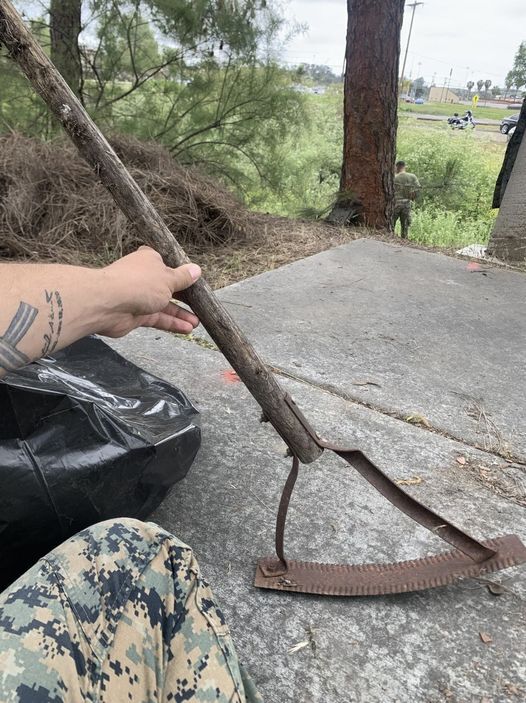In this age of modern technology and automated gadgets, there is something special about using traditional hand tools for maintaining our homes. Among these timeless tools, the manual edger holds a certain charm. It proves that sometimes, the old ways can still be the coolest.

A manual edger goes by many names – step edger or half-moon edger. It is a simple yet fascinating tool that takes us back to a time when weekend yard work was as routine as Sunday dinner. The design of the manual edger is a marvel of simplicity. It consists of a T-shaped tool with a serrated semi-circular blade attached to a wooden handle, about three feet in height. This blade, usually made of sturdy metals like iron or steel, gives the manual edger its distinctive edge – both literally and figuratively.
For dedicated gardeners, the manual edger becomes an extension of their body. Using it becomes a rhythmic and meditative process. You place the half-moon blade against the edge of the turf, step down firmly to cut through the grass, and then pull back to reveal a clean line. It is a physical activity that engages the body, requiring balance and precision that no machine can replicate.
The appeal of the manual edger lies not only in its functionality but also in its ability to reconnect us with the physical aspect of home improvement. There is a sense of accomplishment that comes from working on our own lawns and gardens. The sweat on our brow and the dirt under our fingernails become badges of honor, telling stories of personal effort and care invested in the land.
In a world that increasingly craves mindfulness and a break from the digital realm, the manual edger offers an escape. It allows us to unplug, enjoy the outdoors, and interact with the environment in a productive and restorative way. The rhythmic motion of using the edger can be a therapeutic exercise, allowing thoughts to flow freely, accompanied by the satisfying sound of the blade slicing through the soil.
When it comes to the environment, using a manual edger is a great choice. Unlike gas or electric edgers, it produces no emissions, operates silently, and requires no other resources besides human energy. It is a sustainable option for eco-conscious homeowners who take pride in reducing their carbon footprint.
The durability of tools like the manual edger is impressive. They can last for decades, often outliving their modern counterparts. The worn handle and rusted blade are not just signs of age but symbols of the countless hours of labor and care they have facilitated. These tools are not disposable; they are enduring and can be sharpened, repaired, and passed down through generations.
The manual edger embodies the coolness of doing things the old-fashioned way – engaging with the land and respecting the rhythms of nature. It reminds us that not all progress needs to be powered by technology. Sometimes, the most fulfilling work is done with our hands, using tools that require nothing more than human strength and dedication. As we move towards an increasingly automated future, it is worth cherishing the value and joy of physical labor. The manual edger stands as a symbol of that enduring legacy.




